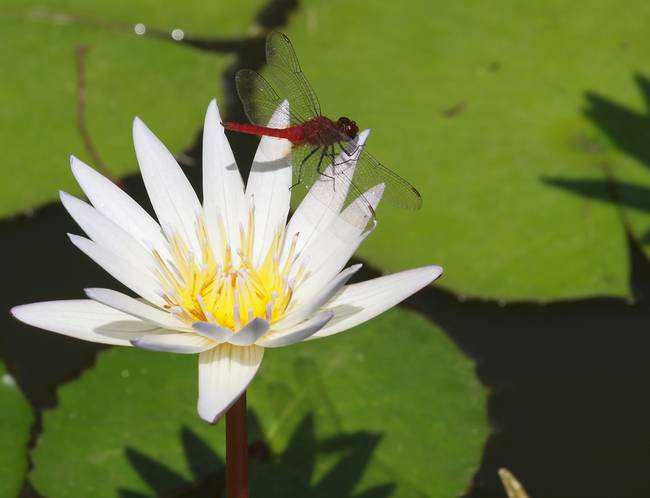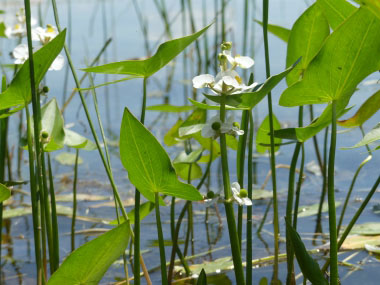Home Sweet Home
- Swati Shrestha
- Sep 30, 2020
- 4 min read
Updated: Nov 13, 2020
Week Two
Lesson 2: A Dragonfly's Habitat

Where do dragonflies live, and what type of habitat do they need?
- Dragonflies are found all over the world.
- They are most abundant in slow moving freshwater, such as streams and ponds.
- They also tend to stay away from water habitats with lots of fish, because fish are one of the dragonfly's main predators.
- Some dragonflies, depending on species, are found in lakes, ponds, rivers and streams, or other wetlands such as marshes, swamps and bogs.
A dragonfly's habitat can depend on their stage of life.
- In the aquatic stage of life, dragonfly nymphs stay underwater to feed and grow.
- Once they molt, or shed their skin, they emerge from the water and begin to live and thrive above water.
- Dragonflies are also one of the few insects that migrate. As adults, some migrate to the south during wintertime, and some spend the winter as nymphs living underwater.
How does the environment and climate affect their behavior?
- Dragonflies love warm and sunny weather, and this is when they like to fly.
- If it's a cold or wet day, these insects tend to hide in vegetation.
- Adult males even establish territory along edges of ponds or streams. They have defensive behavior towards other males of their species that attempt to intrude.
- When it's too cold for a dragonfly to take flight, they do something called "wing whirring". They vibrate their wings to get their muscles warm enough to fly.
- Sometimes, you may see a dragonfly perched on a sunny branch or rock in the mornings... they enjoy sunbathing!
- Depending on climate, some species of dragonflies can even change their body color to cool down and heat themselves up.

- For example, the Common Green Darner turns a bright, light blue color when they get hot. The platelets in their blood rise, resulting in that color. It also reflects sunlight and helps prevent them from overheating.
- When the darners get cool, the light colored platelets sink, making their body a darker purple, or black and brick red. Turning a darker color, helps them absorb more heat and light, letting their bodies warm up.
Below are some images of dragonfly habitats
What types of plants & vegetation are in a dragonfly's habitat?
- Plants and vegetation are essential to a dragonfly's habitat.
- There are 4 general types of plants that dragonflies need in their environment:
- Submerged Plants:
- For a successful habitat, underwater plants are necessary, because they provide protection from predators above or below water, such as birds and fish. Submerged plants are also important for the nymph stage of a dragonfly, so they can survive to adulthood.
- Dwarf sagittaria (image 1 below) and Brazilian waterweed (image 2 below) are examples of aquatic vegetation that dragonflies like. Dwarf sagittaria resembles long bladed grass, while Brazilian waterweed looks partly like grass and partly like seaweed.
- Floating Plants:
- Floating plants rest on the surface of the water, and is another component of a dragonfly habitat. This type of vegetation is important because some dragonflies lay their eggs on the underside of these plants, or sometimes on their stems. It also gives them a place to perch and rest.
- Various types of water lilies (image 1 below) and Fanwort (images 4 & 5 below) are great floating plants for dragonflies. There are different types of water lilies, such as Hardy (image 2 below) and Tropical (image 3 below) variants as well as day and night blooming lilies.
- Click this link for further information on water lilies- https://www.exploregeorgia.org/things-to-do/blog/waterlilies-jewels-of-the-water-garden
- Emergent Plants:
- This type of vegetation is a combination of a submerged and floating plant. These plants have roots underwater, but stems/leaves/flowers above the water.
- These plants are essential to go from the nymph stage to the adult stage. Dragonflies use these plants to emerge from the water to molt then become an adult.
- Water horsetail (images 1 & 2 below) and Bogbean (images 3 & 4 below) are types of emergent plants for a dragonfly's habitat. Water horsetail is a green/dark green color that has a partly hollow stem with few or no branches. Bogbean is a green plant with small white flowers, and can have a spiky appearance.
- Shoreline Plants:
- Shoreline plants are mainly to accommodate adult dragonflies. They provide an area to lay eggs or just hangout. This type of vegetation thrives in more moist soil.
- These aren't completely necessary, but would definitely enhance a dragonfly's environment.
- Arrowhead (images 1, 2 & 3 below) and Cattails (images 4 & 5 below) are some shoreline plants that are found in many natural ecosystems for dragonflies. Arrowhead, has leaves shaped like the head of an arrow, sometimes with yellow-centered white flowers. Cattail is mainly light green, and is a rush like plant with cigar shaped flowers on the top of its stem.
So what can you do to make your environment a home for dragonflies?
- Dragonflies are extremely helpful to the ecosystem, and to humans. Having them around in your yard or community is really beneficial.
- Reducing the use of pesticides and other harmful chemicals is a great way to start to introduce dragonflies to your home.
- By providing a natural habitat for dragonflies, they act as a natural pesticide for other pesky and unwanted insects such as mosquitoes and gnats.
Click below to watch a quick video about what you can do to attract dragonflies to your home!
Georgia is home to the Club tail dragonfly.
- Georgia's ecosystems and habitats are home for a species of dragonfly called the Club tail.
- They are sometimes called the "trout" of dragonflies because they are elegant and hard to find. But if you do find them, they are pretty easy to identify; they have a club shaped abdomen, hence the name "club tail".
- Club tails occupy specialized habitats, and many of them are only stream and river species.
- The sandbars of south Georgia streams are home to various species of Club tail as well.
Upcoming Dragonfly Habitat Project

* The picture on the right is an example of a habitat that can be built for dragonflies.
* This type of habitat is the goal model for what will be created for the project to cultivate dragonflies to reduce mosquito population as an alternative to chemicals.










































Comments